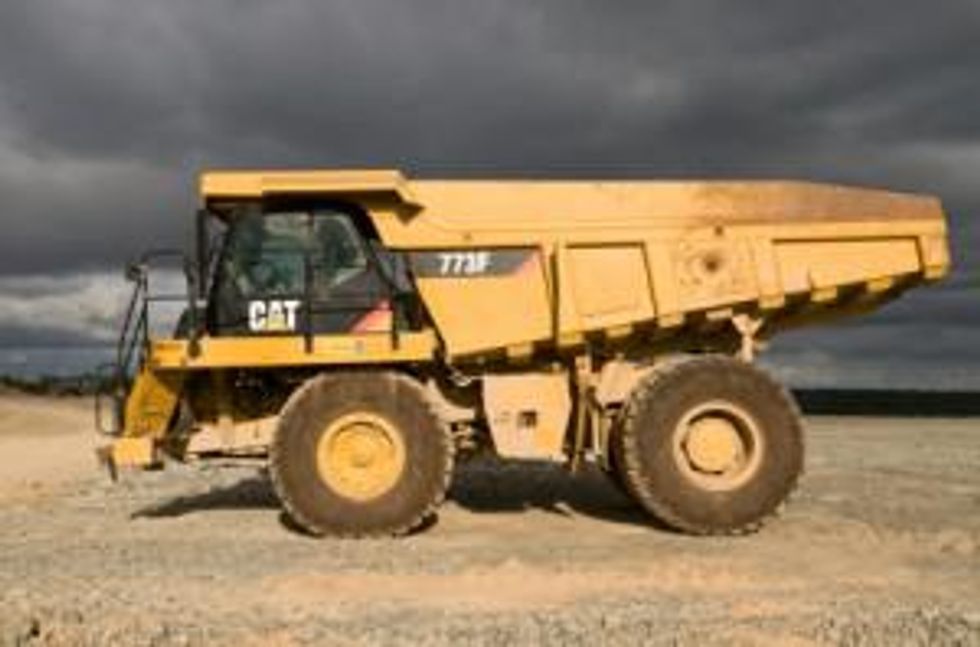Despite today’s challenging resource markets, commodities demand is expected to rise in the long run. These three mining-equipment suppliers should benefit as a result.
Shares of mining equipment suppliers have mostly declined this year. That’s because many producers are scaling back or postponing new mining projects due to lower resource prices and rising capital and operating costs.
For example, in August, BHP Billiton (NYSE:BHP,ASX:BHP,LSE:BLT) indefinitely postponed a $20-billion expansion of its massive Olympic Dam copper–gold–uranium–silver project in Australia. BHP is also holding off on harbor redevelopment in that country, and has said it will approve no new major projects before June 2013.
But despite setbacks like these, resource development is forecast to rise in the long run, largely thanks to demand from rapidly urbanizing countries like China and India.
Rising resource demand should support mining equipment sales
For example, the World Steel Association sees global steel demand rising 3.2 percent in 2013, with Indian demand increasing 5 percent, to 77.3 million metric tons (MT). The country’s overall steel consumption could rise to 200 million MT by 2020, according to Indian steelmaker Jindal Steel & Power (BSE:532286).
Higher global steel demand would spur mining of metals used to make various types of steel, including molybdenum, manganese and nickel.
In addition, in its recently released World Oil Outlook, the Organization of the Petroleum Exporting Countries (OPEC) forecast that global oil demand will rise from 87.8 million barrels per day in 2011 to 92.9 million bpd in 2016. By 2035, OPEC sees demand rising to 107.3 million bpd.
More mining equipment will be needed to extract the resources needed to meet this increase in demand. As well, many equipment makers are well diversified and have other businesses to fall back on when things slow down in the mining business. Plus, they often reward investors with attractive dividends.
Here’s a look at three companies that provide the equipment that the mining industry needs to grow. Two are major global manufacturers and the other is a smaller company that operates in Canada.
Global market leaders: Caterpillar and Joy Global
Caterpillar (NYSE:CAT) is now the world’s biggest mining equipment maker thanks to its $8.8-billion purchase of Bucyrus International in 2010. The company makes a range of equipment for surface and underground mining, such as trucks, hydraulic shovels, draglines and conveyor-belt systems.
Besides mining gear, the company makes construction equipment, diesel and natural-gas engines, industrial gas turbines and diesel-electric locomotives.
In the third quarter of 2012, Caterpillar’s sales rose 5 percent from a year ago, to $16.5 billion. Clients in the resource industry accounted for $5.2 billion, or about 32 percent of that total. Resource-sector sales were also up 13 percent from the third quarter of 2011. Earnings jumped 49 percent, to $2.54 a share.
However, due to the weak global economy, particularly in China and Europe, Caterpillar lowered its full-year earnings forecast to $9 to $9.25 a share, down from its earlier prediction of $9.60. The company said it is expecting neither a recession nor rapid growth in 2013.
Caterpillar pays a quarterly dividend of $0.52 a share for a 2.49 percent yield.
Joy Global (NYSE:JOY) also makes heavy equipment, such as draglines, electric shovels, loaders and conveyor systems. Unlike Caterpillar, Joy is entirely focused on the mining industry. The company also services the equipment it sells.
Joy operates through two divisions: Underground Mining Machinery and Surface Mining Equipment. Both saw higher sales and profits in the company’s latest fiscal quarter, which ended July 27, 2012. As a result, Joy’s total sales rose 22 percent, to $1.4 billion. Income from continuing operations rose 12 percent, to $193.5 million, or $1.82 a share.
New order bookings, a sign of future sales, declined 25 percent in the quarter, and the company’s order backlog fell to $2.8 billion from $3.1 billion. That’s because the slowdown in China continues to weigh on new orders. Demand from coal miners has also declined.
Joy pays a quarterly dividend of $0.17 a share for a 1.23 percent yield.
Toromont is a leading Canadian mining equipment supplier
Toromont Industries (TSX:TIH) mainly serves the mining sector through its equipment group, which sells and rents a wide array of mining and construction gear, including Caterpillar equipment, through dealerships in Ontario, Manitoba, Newfoundland and Labrador, and Nunavut. It also has an extensive support department that maintains and monitors equipment on and off site and sells replacement parts.
The equipment group also serves the mining industry through its Toromont Energy business, which builds and operates power plants for a range of facilities, including remote mining projects.
Toromont’s revenue rose 13 percent in the third quarter, to a record $415 million from $367.3 million a year earlier. Earnings from continuing operations rose 6 percent, to $47 million, or $0.43 a share. The equipment group saw strong new equipment sales and rentals. The company’s CIMCO division, which makes refrigeration systems for industrial and recreational clients (such as ice rinks), also performed well.
Like Joy Global and Caterpillar, Toromont saw lower order bookings in the latest quarter. Backlogs at the equipment group were $166 million, down from $300 million a year ago.
Toromont pays a quarterly dividend of $0.12 a share, for a 2.43 percent yield.
Securities Disclosure: I, Chad Fraser, hold no positions in any of the companies mentioned in this article.
